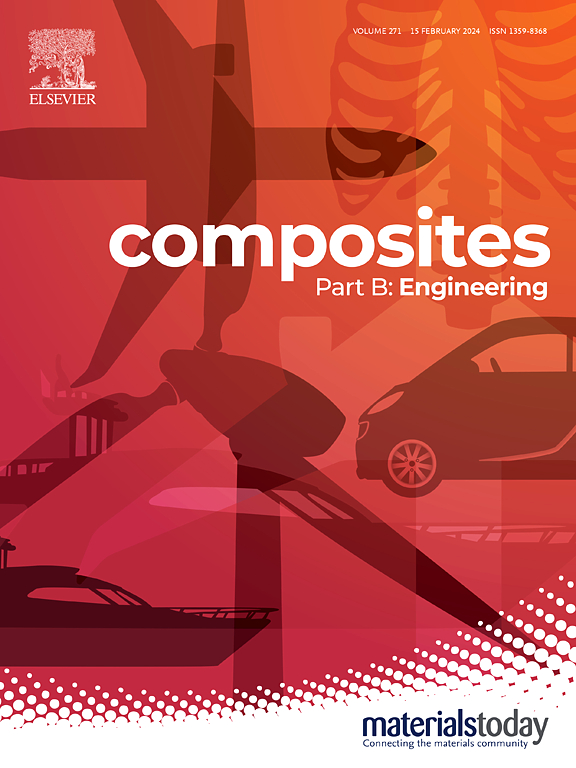Multiphysics-coupled failure mechanism of Solid oxide fuel cell sealants under long-term operation: From microcrack evolution to electrochemical degradation and mechanistic damage
IF 12.7
1区 材料科学
Q1 ENGINEERING, MULTIDISCIPLINARY
引用次数: 0
Abstract
Solid oxide fuel cell (SOFC) sealant systems experience significant performance degradation and mechanical damage during prolonged high-temperature operation, which severely impacts their reliability and lifespan. This study investigates the degradation of electrochemical and mechanical performance, along with the microstructural evolution of the SrO–SiO2–MgO–Al2O3 sealant, NiO-YSZ anode, and 430 stainless steel interconnect system over 5000 h of operation. The findings reveal that the SOFC stack exhibits a voltage decay rate of 6.50 % per thousand hours at a current density of 300 mA/cm2, with open-circuit voltage degradation reaching 7.82 % after 5000 h. Sealant failure impedes charge transfer and gas diffusion reactions, resulting in a 126.66 % increase in ohmic resistance. The precipitation of Sr2MgSi2O7 and SiO2 crystal phases in the sealant leads to increases of 75.15 % and 84.26 % in hardness and elastic modulus, respectively. The uneven precipitation of crystal phases also accelerates crack generation. The diffusion and enrichment of Mg, Sr, and Si elements at the sealant-anode interface further facilitate crack propagation. These cracks ultimately penetrate the entire sealant and single cell, leading to the failure of the SOFC structure. Multi-physics field coupled modeling reveals that the Mises stress, creep strain, and damage in SOFC stack components increase with the extent of sealant cracking. When the sealant is completely cracked, the current density of the SOFC at 0.60 V voltage decreases by 34.96 %, which significantly reduces the life of the SOFC stack. This study offers valuable insights for optimizing the design and extending the operational life of SOFC stacks.

固体氧化物燃料电池密封胶长期运行的多物理场耦合失效机制:从微裂纹演化到电化学降解和机械损伤
固体氧化物燃料电池(SOFC)密封胶系统在长时间高温运行中会出现严重的性能下降和机械损伤,严重影响其可靠性和使用寿命。本研究考察了SrO-SiO2-MgO-Al2O3密封胶、NiO-YSZ阳极和430不锈钢互连系统在5000小时的运行过程中电化学性能和力学性能的退化以及微观组织的演变。研究结果表明,在电流密度为300 mA/cm2时,SOFC堆叠的电压衰减率为每千小时6.50%,5000 h后开路电压衰减率达到7.82%。密封胶失效阻碍了电荷转移和气体扩散反应,导致欧姆电阻增加126.66%。Sr2MgSi2O7和SiO2晶相在密封胶中的析出,使密封胶的硬度和弹性模量分别提高了75.15%和84.26%。晶相的不均匀析出也加速了裂纹的产生。Mg、Sr和Si元素在密封阳极界面的扩散和富集进一步促进了裂纹的扩展。这些裂缝最终会穿透整个密封胶和单个孔,导致SOFC结构的破坏。多物理场耦合模型表明,SOFC堆垛构件的Mises应力、蠕变应变和损伤随密封胶开裂程度的增加而增加。当密封胶完全开裂时,SOFC在0.60 V电压下的电流密度下降34.96%,大大降低了SOFC堆叠的寿命。该研究为优化SOFC堆栈的设计和延长其使用寿命提供了有价值的见解。
本文章由计算机程序翻译,如有差异,请以英文原文为准。
求助全文
约1分钟内获得全文
求助全文
来源期刊

Composites Part B: Engineering
工程技术-材料科学:复合
CiteScore
24.40
自引率
11.50%
发文量
784
审稿时长
21 days
期刊介绍:
Composites Part B: Engineering is a journal that publishes impactful research of high quality on composite materials. This research is supported by fundamental mechanics and materials science and engineering approaches. The targeted research can cover a wide range of length scales, ranging from nano to micro and meso, and even to the full product and structure level. The journal specifically focuses on engineering applications that involve high performance composites. These applications can range from low volume and high cost to high volume and low cost composite development.
The main goal of the journal is to provide a platform for the prompt publication of original and high quality research. The emphasis is on design, development, modeling, validation, and manufacturing of engineering details and concepts. The journal welcomes both basic research papers and proposals for review articles. Authors are encouraged to address challenges across various application areas. These areas include, but are not limited to, aerospace, automotive, and other surface transportation. The journal also covers energy-related applications, with a focus on renewable energy. Other application areas include infrastructure, off-shore and maritime projects, health care technology, and recreational products.
 求助内容:
求助内容: 应助结果提醒方式:
应助结果提醒方式:


